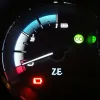Having a car is more than owning a good that takes us from point A to point B. We can often end up in a situation where we are faced with certain defects in the most unexpected moments.
Even if the problem can be a complex and difficult one that needs the intervention of a mechanic, it doesn’t hurt to find out more about the technical part behind the body just in case.
Today we will focus on the symptoms that may occur if the driveshaft starts to malfunction.
{{{ad-code}}}
First of all, what is the driveshaft?
You may have heard of the concept of driveshaft transmission, but under the name of longitudinal transmission. In short, the driveshaft is the element that extends under the entire surface of the car that actually transmits the rotation from the drive shaft to the rear axle.
For this reason, in a car that has front-wheel drive, you will hardly encounter this element at all. The PTO shaft can only be found on 4X4 cars or those with rear-wheel drive and front engine.
In addition, the cardan shaft can also make the connection between the clutch and the gearbox, if the gearbox is placed on the car frame. In general, the dial shaft aims to transmit driving force, without producing changes, to various elements of the car.
But, like any other component of the car, it can also suffer malfunctions.
{{{ad-code}}}
What are the symptoms of a defective cardan shaft?
A squeak-like noise at start-up (either in front or reverse)
Most of the components that make up the cardan shaft are lubricated from the factory, but this lubrication may not be enough to support the movements made by the machine while driving, after a certain period.
Given that each element of which the shaft is composed withstands a certain movement, friction, change of speed, it is very possible that this oil evaporates quite easily. Especially since the supported movement is in the same location.
Thus, without any form of lubrication, the friction remains between metal and metal, producing a noise similar to a creak. You can probably hear this noise only when starting or before the car picks up a speed and the sound is attenuated by other related noises.
{{{ad-code}}}
But the noise must be considered a sign that you must consult a mechanic for your safety and that of your car and also in the hope that you can prolong the life of the cardan shaft.
1. A click when you change gearshift
This specific type of sound indicates that the bearings that form the cardan shaft have enough space for movement to allow the necessary rotation of the drive shaft, but they reach a neutral point when you try to put the car in reverse.
This may mean that the next stage of wear has been reached, after the one mentioned in the previous point. You must use a mechanic to lubricate the cardan shaft, but also to prevent other damage.
2. A certain vibration of the car

Any kind of vibration or movement out of the ordinary when driving over a long distance and at high speed is a bad sign.
In this case it indicates that the bearings have worn out so much that they allow a wider than usual movement of the drive shaft, this coming out of its shaft.
Even if the sensation of an unbalanced wheel can be similar, it will be much more frequent, because the rotations of the gear shaft are 3-4 times more frequent than those of the wheels.
{{{ad-code}}}
This symptom can be an alarm signal, as it indicates not only that you have cardan problems, but also that these faults affect other elements around you, such as the transmission. In this case, you must use a mechanic to tell exactly the element of the cardan shaft that has suffered damage and change it, before the condition of the car deteriorates further.
3.Transmission fluid is leaking
The moment you notice that the transmission fluid starts to leak behind the transmission,you should realise that you have cardan problems.
It means that the above-mentioned vibration has affected the drive shaft and caused damage to the output shaft, thus leading to leakage of the transmission fluid.
{{{ad-code}}}
If you notice this type of symptom, you must call a mechanic to catch the cause of the leak and take a look at the transmission system.
4. Loud noises from under the car
When there is too much play between the parts of the cardan, it will make some loud noises, as if you hit two metal hammers head to head or even similar to the sound of the bell.
In this case the cardan shaft must be changed as soon as possible
5. Displacement at the level of the drive shaft
You may have heard or even seen this type of malfunction, in which case you have no choice but to pull over to the side of the road and wait for someone to come help you. This means that it has reached the final and culminating point of wear, in which the drive shaft has completely failed and effectively fallen to the ground.
{{{ad-code}}}
In this case the repairs will be extremely expensive, because not only the cardan shaft has been damaged, but also the cardan shaft will need a complete replacement.
Thus, in order to avoid reaching such extreme situations, it is better to resort to periodic technical checks and to go to the mechanic at the first symptoms you feel. It is better to intervene early, with low expenses than to wait until a complete damage to the cardan shaft and the cardan shaft.
{{{ad-code}}}
Photo source: motor-doctor.co.uk, cartreatments.com, gizmodo.co.uk







